The GSMArena tablet buyer's guide: August 2014
August 2014
Compact tablets
In this chapter, we'll be focusing on compact tablets measuring about 7". These tablets oftentimes come with 3G or LTE-enabled variants, which can be great for when you need connectivity on the go - and let's face it, seven-inch or thereabouts is the only tablet size that's truly portable.
We've sorted the following by price, although keep in mind that pricing and availability can vary widely by region. Mobile internet-enabled tablets are oftentimes available from mobile carriers at special discounts, which adds another wrinkle to the equation.
In our previous guides, the Barnes & Noble Nook kicked things off thanks to its rock-bottom price of around €100, which simply couldn't be beat. Now, with B&N phasing out its Nook tablets, we turn to Asus to kick things off.
The Asus MeMo Pad 7 has made it onto our previous guides, and thanks to its updated refresh - the ME176C build - it's continues to be a compelling offering. The fact that its price continues to fall doesn't hurt either.
The Memo Pad 7 offers a quad-core 1.86GHz Intel Atom processor, 1GB of RAM, and Android 4.4.2 KitKat. For all intents and purposes, it's a cheaper version of the original Google Nexus 7 (also made by Asus), except that it's running on an Intel chipset and has a microSD card slot for expanding the limited memory - it's either 8GB or 16GB of built-in storage with this one.
The screen is a bit low on pixel density, but it's an IPS LCD unit so it offers excellent side viewing angles making for a nice user experience.
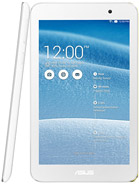 Asus MeMo Pad 7 ME176C |
Pros | Cons |
|
|
|
There was plenty of clamoring in the comments section of our previous edition Buyers' Guide about the Tegra Note 7 tablet, so we've decided to include it in this iteration of the guide.
Taking over the space occupied by the newer Samsung Galaxy Tab 4 7.0 (and the identical Galaxy Tab 4 Nook), the Tegra Note 7 from EVGA offers a very robust package at a price that continues to drop with each passing month.
The Tegra Note 7 offers a quad-core 1.9GHz processor on nVidia's Tegra processor. Coupled with the robust GeForce GPU, the Note 7 is one of the most capable compact gaming tablets on the market. It comes with Android 4.3 Jelly Bean, upgradable to Android 4.4.2 KitKat, and has an integrated stylus to boot.
The 1280 x 800px resolution is a bit on the low side compared to newer offerings, but at this price it is a very competitive package regardless.
 EVGA nVidia Tegra Note 7 |
Pros | Cons |
|
|
|
The Asus FonePad 7 makes it back onto our list as the cheapest 3G-enabled compact tablet that's worth the money.
It comes in 8/16/32GB variants and runs on a dual-core 1.6GHz Intel Atom Z2560 processor. Its Android version is upgradable to version 4.4.2 KitKat, but what makes it stand out is its telephony features - you can get the LTE model for right around €200, which is a hard price to match.
This year, Asus has updated its Fonepad 7 to include a dual-SIM version as well, but unless you really need that feature, it's strongly recommended that you go with last years' model, as its simply better in every conceivable way - from screen resolution, to processor, to camera, and even the Android version.
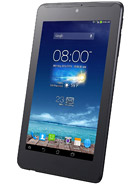 Asus Fonepad 7 |
Pros | Cons |
|
|
|
Like we mentioned in our intro, the recent trend - particularly with compact tablets - is a drop in price for LTE-capable models of certain top tablets. While the price for the WiFi-only models of these select devices has remained largely the same, LTE variants have seen some healthy price reductions, likely due to lower-than-expected sales.
One such device is the Kindle Fire HDX. It runs on a quad-core 2.2GHz Snapdragon 800 processor and Adreno 330 GPU, alongside 2GB of RAM. With its unique software build, its Android version is highly customized and does not have Google Play support. Instead, you'll have to rely on the less-varied Amazon App Store for your app needs and have Amazon's web services replace Google's.
There's no microSD card slot on this one either, so we'd recommend at least the 32GB version if you decide to go for the latest Kindle Fire.
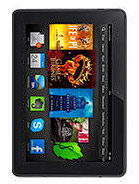 Amazon Kindle Fire HDX |
Pros | Cons |
|
|
|
Another device that's actually gone up in price is the second generation Nexus 7 tablet. It caused quite a stir at its unveiling last summer, and thanks to a drop into the sub-€300 for the LTE model, it remains a very compelling offering.
The tablet is powered by a quad-core 1.5GHz Snapdragon S4 Pro chipset with Adreno 320 GPU, and 2GB of RAM. It's also one of the few compact tablets to come with built-in wireless charging capabilities, which is a nice perk even though you'd need to get the optional wireless charger for that.
Plus, it's the only one of our tablet recommendations that weighs below 300 grams. The only real downside is that is has no memory card slot, so you should definitely pay the premium to get the 32GB model. The user available storage on the 16GB version simply doesn't cut it in our book.
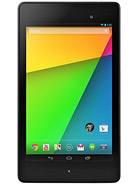 Asus Google Nexus 7 (2013) |
Pros | Cons |
|
|
|
| Review | ||
Possessing a distinct iPhone-like design, the Huawei MediaPad X1 is another tablet that can make and receive calls - and it's also still the most expensive tablet on this page.
We had a chance to check the X1 out at the MWC 2014 in February and our impressions are only positive. The unusual choice of chipset model - Huawei's in-house quad-core HiSilicon Kirin 910 - will probably serve it well, as our tests of the Ascend P7 smartphone showed it performs around the level of a Snapdragon 600 chipset.
The 7-inch screen with a resolution of 1200x1920px is certainly eye-catching, not to mention the extremely skinny bezels. On the back there is even a 13MP camera, while on the front, there is a 5MP one.
It's also got a clever technology, which allows it to charge other devices via its microUSB slot.
However, this one doesn't come cheap - it still costs around €400 or about the same as a well-equipped 5- or 6-inch smartphone.
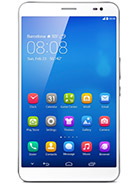 Huawei MediaPad X1 |
Pros | Cons |
|
|
|
| Hands-on | ||
Reader comments
- Anonymous
- 23 Jan 2015
- rAQ
Yaaa nooo
- AnonD-78985
- 15 Dec 2014
- qd}
Nexus 7 second generation is a really good tablet. Proud owner
- Herocoder
- 02 Dec 2014
- MSU
Dear GSMArena, while I appreciate the article being helpful as a guide, I'm a little disappointed with the exclusion of Sony Tablet Z3 Compact. It seems to be the best tablet around fully capable of replacing your mobile phone (if u didnt mind the si...